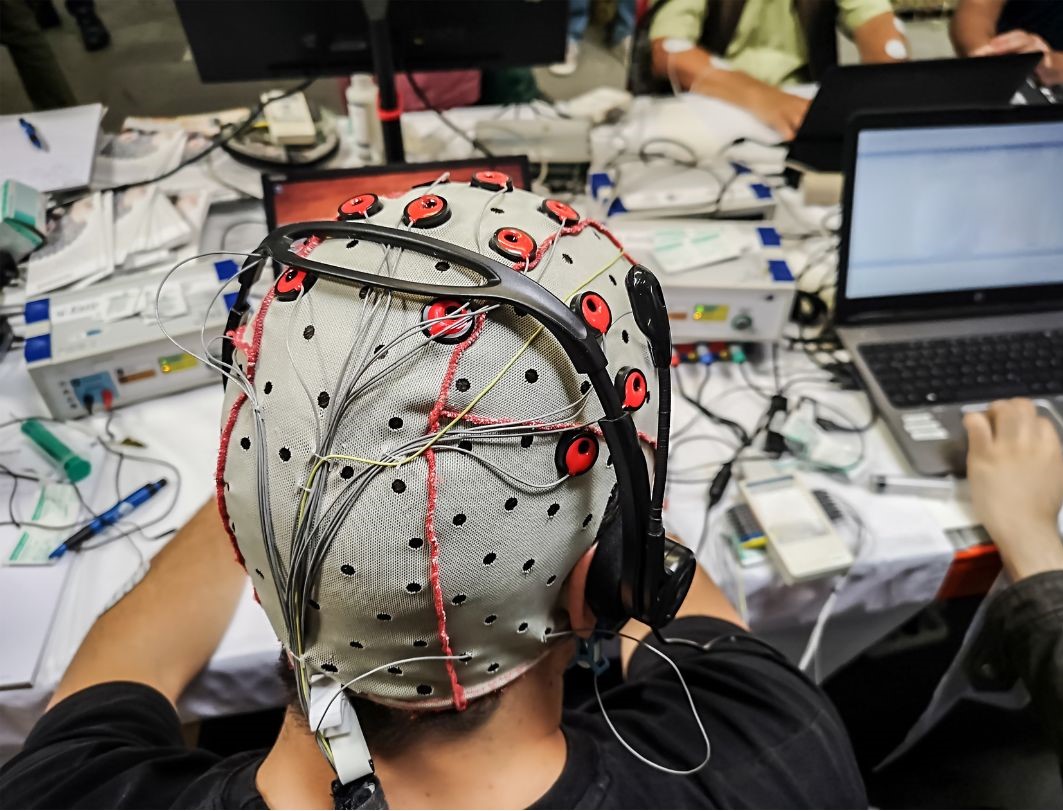Celebrating Interdisciplinary Research: 5 Collaborations That Prove We Go Farther Together
Celebrating Interdisciplinary Research: 5 Collaborations That Prove We Go Farther Together


Celebrating Interdisciplinary Research: 5 Collaborations That Prove We Go Farther Together
Interdisciplinary collaboration has become a driving force in scientific research, allowing experts from diverse fields to join forces and tackle complex problems. By integrating knowledge, methodologies, and perspectives, interdisciplinary collaborations generate innovative solutions beyond individual fields' limitations.
In this article, we celebrate five examples of interdisciplinary research that prove "we go farther together." These collaborations have made significant breakthroughs in brain-computer interfaces, climate research, space science, genomic research, and cancer research, offering promising pathways to a brighter future.
1. Brain-Computer Interfaces (BCIs):
Disciplines involved: neuroscience, engineering, computer science, data analytics, medicine, psychology, and bioethics.
Brain-computer interfaces (BCIs) enable direct communication between the brain and external devices by interpreting neural signals and translating them into commands. The signals bypass traditional pathways like nerves and muscles to control external devices or provide feedback to the user. While the idea sounds like something out of a sci-fi novel, we need to remember there are already thousands of people benefiting from these assistive technologies: "Some 220,000 hearing impaired already benefit from cochlear implants, which translate audio signals into electrical pulses sent directly to their brains." [1]


Interdisciplinary synergy is fundamental to advancing BCIs. Neuroscientists contribute their understanding of brain function and neural signals, while engineers develop the hardware and software components necessary for signal acquisition and processing. Computer scientists and data analysts decode and interpret brain signals. Meanwhile, medical professionals provide insights into clinical applications and help bridge the gap between research and patient care. BCI collaborations have led to tremendous advancements in neurorehabilitation, improving the lives of individuals with disabilities and our understanding of the brain's intricate workings. [2]
2. Climate Research & Sustainability Sciences:


Disciplines involved: environmental science, ecology, atmospheric sciences, economics, climate science, data analytics and modelling, engineering, and social sciences.
To address the urgent challenge of climate change, interdisciplinary collaborations have become essential for shaping policies, mitigating environmental risks, and fostering a sustainable future:
- Collaboration between climate scientists and data analysts has allowed researchers to extract patterns, predict future climate trends, and improve climate change projections and adaptation strategies.
- Collaboration between environmental scientists and economists integrates ecological data with economic models to evaluate the cost and benefits of conservation efforts, quantify ecosystem services, and inform decision-making on environmental resource management.
- International Collaboration: The Intergovernmental Panel on Climate Change (IPCC) is the United Nations body for assessing the science related to climate change. They bring together thousands of scientists from different disciplines to provide a global understanding of climate trends, impacts, and mitigation/adaptation strategies. The IPCC informs policy decisions and international agreements like the 2015 Paris Agreement. [3]
3. The International Space Station (ISS):
Disciplines involved: medicine, physiology, astrophysics, astronomy, microbiology, biotechnology, materials science, earth sciences, robotics, aerospace engineering, and information technology.
The ISS stands as a testament to the power of interdisciplinary collaboration on a global scale. Scientists, engineers, and astronauts from international space agencies come together to ensure the functioning and success of the ISS. They aim to study long-duration space missions, microgravity effects and develop technologies for future space exploration and humanity back on Earth.
These are just a few examples of the diverse disciplines involved in the functioning and mission objectives of the International Space Station: Aerospace engineers contribute to the design, development, and maintenance of the ISS. Space medicine doctors and physiologists study the effects of microgravity and the space environment on the human body, ensuring crew well-being. Materials scientists study the behaviour of new materials for space applications. Communication specialists and information technologists manage the communication infrastructure. Meanwhile, astrophysicists, astronomers, microbiologists, biotechnologists, and earth scientists use the ISS to conduct research that contributes to our understanding of the universe, our planet, and systems to improve our environment. [4]


4. Genomic Research & The Human Genome Project:
Disciplines involved: molecular biology, genetics, bioinformatics, genomic medicine, epidemiology, genomic technology, and ethics.
Genomic research is a multidisciplinary field focused on understanding genomes' structure, function, and organization to enhance real-world applications in health, agriculture, conservation, and other areas of biology and medicine. Bioinformatics, a field that combines biology and computer science, plays a vital role in genomics research. Collaboration between bioinformaticians and genomic researchers allows for the analysis and interpretation of vast amounts of genomic data. This interdisciplinary approach has facilitated discoveries related to genetic variations and disease mechanisms; personalized medicine was essential in the Human Genome Project. [5]
The Human Genome Project was a monumental scientific collaboration that aimed to map and sequence the entire human genome. The project was initiated in 1990 and completed in 2003. Geneticists and molecular biologists extracted and analyzed DNA samples, while bioinformaticians and computational biologists developed algorithms and tools to process and interpret massive amounts of genomic data. Medical researchers contributed their expertise in understanding the genetic basis of diseases, while ethicists provided guidance on the responsible use of genetic information. This interdisciplinary effort opened new avenues for personalized medicine, genetic diagnostics, and therapeutic advancements, transforming the field of genomics and providing crucial insights into human health and disease.[6]
5. Cancer Research:


Disciplines involved: oncology, clinical medicine, molecular biology, immunology, pathology, pharmacology, behavioural science, genomics, radiology, pharmacology, biostatistics, and epidemiology.


Cancer research is inherently interdisciplinary, bringing together experts from diverse fields to tackle this disease's complex and multifaceted nature. Biomedical scientists delve into the molecular and cellular mechanisms underlying cancer development, while oncologists provide clinical insights and patient perspectives. Genomics and bioinformatics experts analyze vast datasets to uncover genetic alterations, while imaging specialists contribute their expertise in visualizing tumours and monitoring treatment responses. Pharmacologists and drug developers work on novel therapies, while biostatisticians and epidemiologists provide valuable insights into cancer risk factors and population-based studies. Behavioural and social scientists examine the impact of lifestyle and societal factors on outcomes. [7]
Furthermore, initiatives like The Cancer Genome Atlas (TCGA) and the International Cancer Genome Consortium (ICGC) bring together researchers from different institutions to study the genetic basis of cancer. [8] This collaborative effort across disciplines, and geographies, drives the progress of cancer research, leading to improved diagnostics, personalized treatments, and better patient outcomes.
Conclusion:
From expanding our understanding of the brain to influencing policies to address climate change, enhancing our exploration of space, unlocking the secrets of the human genome, and advancing our fight against cancer, interdisciplinary collaborations have paved the way for a brighter future. Celebrating these accomplishments reminds us that collaboration is beneficial and essential for solving complex challenges. By embracing interdisciplinary approaches, we have the potential to reach new milestones and transformative advancements that will shape our world for the better.
References
[1] Alexandre Gonfalonieri. (2018, November 25). A Beginner's Guide to Brain-Computer Interface and Convolutional Neural Networks. Towards Data Science; Towards Data Science. https://towardsdatascience.com/a-beginners-guide-to-brain-computer-interface-and-convolutional-neural-networks-9f35bd4af948
[2] Frąckiewicz, M. (2023, April 17). The Importance of Interdisciplinary Collaboration in Brain-Computer Interfaces Research. TS2 SPACE. https://ts2.space/en/the-importance-of-interdisciplinary-collaboration-in-brain-computer-interfaces-research/
[3] IPCC. (n.d.). FAQ Chapter 1 — Global Warming of 1.5 oC. IPCC. https://www.ipcc.ch/sr15/faq/faq-chapter-1/
[4] Research in Space 2017 and Beyond International Space Station Facilities National Aeronautics and Space Administration. (n.d.). Retrieved from https://www.nasa.gov/sites/default/files/atoms/files/np-2017-04-014-b-jsc_iss_utilization_brochure_2017_web_12-20-17.pdf
[5] Bayat, A. (2002). Science, medicine, and the future: Bioinformatics. BMJ, 324(7344), 1018–1022. https://doi.org/10.1136/bmj.324.7344.1018
[6] Institute of Medicine (US) Committee on Building Bridges in the Brain, B., Pellmar, T. C., & Eisenberg, L. (2000). The Potential of Interdisciplinary Research to Solve Problems in the Brain, Behavioral, and Clinical Sciences. In https://www.ncbi.nlm.nih.gov/books/NBK44872/
[7] Smye, S. W., & Gatenby, R. A. (2022). Interdisciplinary approaches to metastasis. IScience, 25(9), 105015. https://doi.org/10.1016/j.isci.2022.105015
[8] National Cancer Institute. (2022, May 13). The Cancer Genome Atlas Program (TCGA) - NCI. Www.cancer.gov. https://www.cancer.gov/ccg/research/genome-sequencing/tcga





